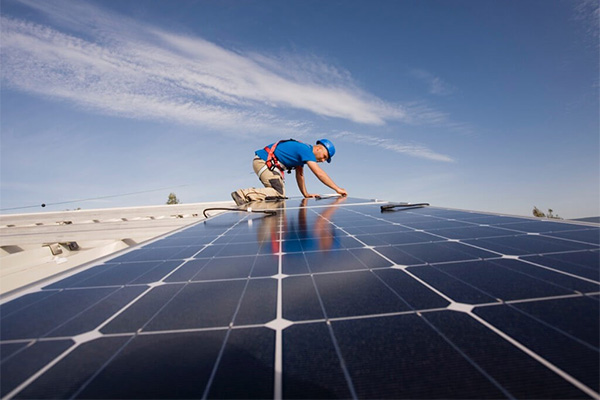- Global renewable power capacity is expected to grow by 2,400 gigawatts in the next five years, with solar at the forefront.
- Solar PV claimed the number one spot in IEA's forecast, with worldwide power capacity expected to surpass hydropower in 2024, natural gas in 2026, and coal in 2027.
- The anticipated growth is tremendous, equal to China’s entire current power capacity.
According to the recently published Renewables 2022 report from the International Energy Association (IEA), global renewable power capacity is expected to grow by 2,400 gigawatts in the next five years. The anticipated growth is tremendous, equal to China’s entire current power capacity.
Perhaps even more impressive, it’s 30% higher than the growth forecast for the sector just one year ago.
What changed?
The global energy crisis prompted a major uptake in renewable energy installations worldwide. Russia’s invasion of Ukraine brought energy security concerns to the forefront, which revealed a global dependency on imported fossil fuels.
Governments and businesses began looking to replace Russian gas with energy alternatives swiftly. The swift uptake by many governments adding policy weight behind renewable energy projects has certainly helped contribute to the unparalleled growth of the industry.
“Countries are more motivated now than ever to adopt renewable energy solutions,” says Derick Lila, Managing Editor at pvbuzzdotcom. “With prices skyrocketing, it’s a terrible time to rely on imported fossil fuels.”
What’s the outlook for solar?
According to IEA projections, solar PV’s installed power capacity is poised to be the largest in the world by 2027!
Solar PV claimed the number one spot in IEA’s forecast, with worldwide power capacity expected to surpass hydropower in 2024, natural gas in 2026, and coal in 2027.
Cumulative solar PV capacity is predicted to triple (to over 2 350 GW by 2027), making solar PV the world’s greatest installed electricity capacity.
The IEA anticipates steady and strong growth for the solar industry over the next five years, despite current elevated investment costs. Even with higher commodity prices, most countries’ utility-scale solar projects remain the most cost-effective option for renewable energy generation.
Any good news for residential solar?
According to the IEA report, distributed solar PV, which includes rooftop solar on homes and buildings, is also on track for fast growth due to elevated electricity prices and policy support in place to help consumers save on energy bills.
Is the solar supply chain anticipated to diversify any time soon?
IEA projects that new policies in the United States and India could lead to more diversified manufacturing of solar PV. The investment in solar PV manufacturing from the US and India is expected to reach approximately 25 billion USD by 2027, which would be a sevenfold increase compared to the previous five years.
Thanks to India’s Production Linked Incentives initiative and the US fully monetizing manufacturing tax credits, the manufacturing cost gap for solar PV is set to close with the current lowest-cost manufacturers in China.
The United States and India have added manufacturing subsidies, tariffs on imported PV equipment, and local-content premiums, encouraging solar project developers to purchase domestically manufactured products. Time will tell if more countries follow suit.
Looking for more good news?
According to the IEA, the green energy movement is giving the world a chance to meet the global warming target of 1.5 °Cm. Turns out, we are on track to add as much renewable power over the next five years as we did in the last twenty!













Comments